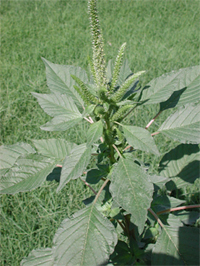
No, this isn’t a story about a new Cheech and Chong movie. What I’m referring to are herbicide-resistant weeds. And in particular, weeds resistant to the herbicide every Green loves to hate, Round Up (or glyphosate).
I got to thinking about this because of a recent story aired by NPR on the rise of Round Up-resistant weeds. These things are getting to be a real pain for farmers growing crops genetically modified to be resistant to the herbicide Round Up (see the video below).
Many anti-GMO folks were worried about this happening. They were concerned about something called horizontal gene transfer where an added gene moves from one plant to another. They were worried this Round Up-ready weed would then go on to become a dangerous pest.
They were only partly right. The weeds are indeed resistant to Round Up but they aren’t Round Up ready. None of the weeds tested so far managed to get a hold of the added gene; it stayed put in the GM plants.
Instead, these weeds became resistant the old-fashioned way: through natural selection. This is the same thing that makes bugs resistant to pesticides and cancers resistant to chemotherapy.
 This Pigweed didn't need outside genes to be resistant to Round Up. It pulled it off all on its own. |
There were always a few individuals in the weed species that happened to be resistant to Round Up. Spraying lots of Round Up killed all the sensitive weeds leaving the resistant ones behind. These resistant ones were the only ones that went on to have seedlings so they essentially founded a new population. Now this species of weed is mostly Round Up resistant.
